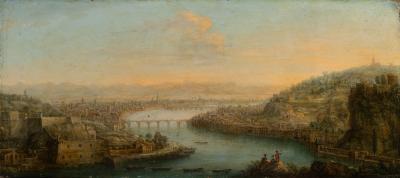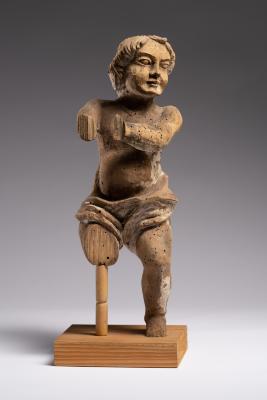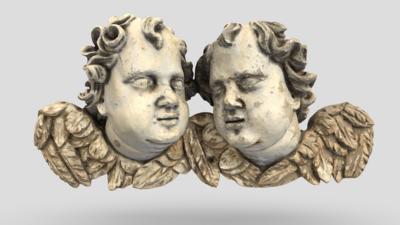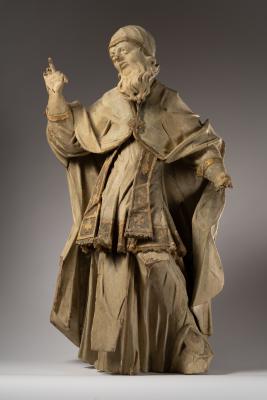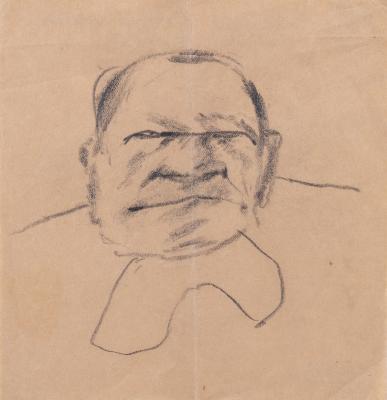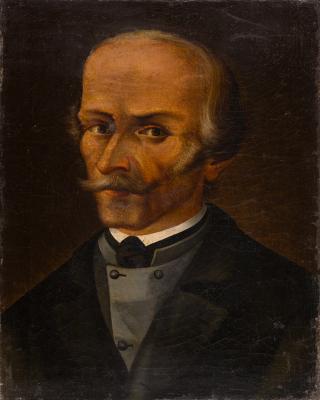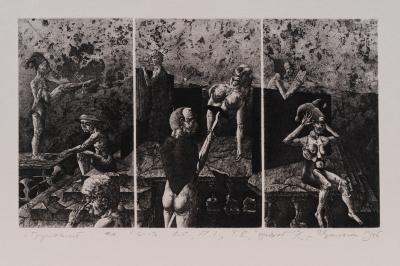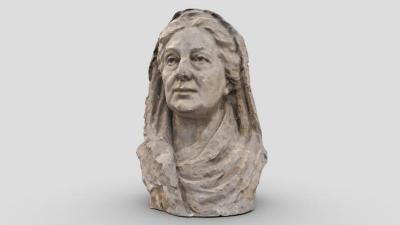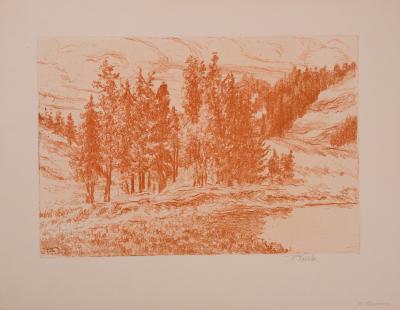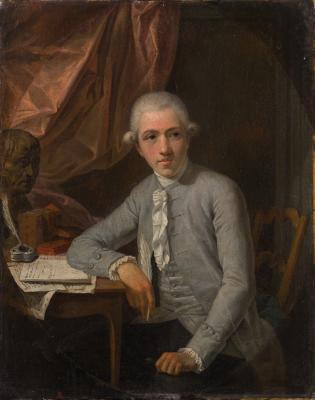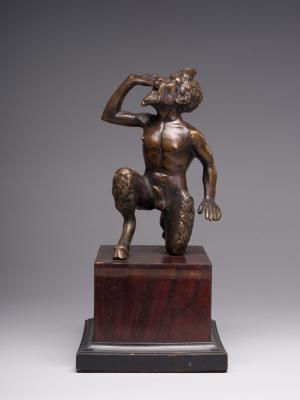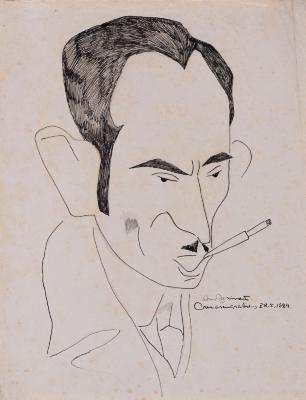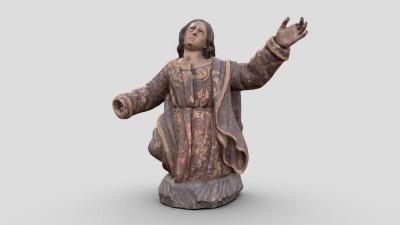The work is from the Roman series. The first version of the composition is known from the album Costumi di Tivoli, published in 1815 and reissued in 1816 in the album Nuova Raccolta di Cinquanta Costumi Pittoreschi incisi all 'acquaforte da Bartolomeo Pinelli Romano, Nicola de Antoni impresse, Ignazio Pavon Offre e Dedica Roma, Roma 1816. In 1818, Pinelli replicated this version in watercolour. A version similar to the Lviv one was released in black and white in the album Nuova Raccolta di Cinquanta Costumi Pittoreschi (New Collection of Fifty Picturesque Costumes), published by Giovanni Scudellari in Rome in 1817. The second version of the composition was no different from the first one, except for a donkey depicted instead of a horse. Besides, the image was less skillfully painted than in the first version. In the foreground, one can see a young woman with a baby pressed to her chest; they are moving on a donkey along a mountain path. She meets a young shepherd starting a conversation, but the woman looks indifferently right through the traveller. She is dressed in clothes typical for southern Italy, particularly in a blue jacket with epaulettes, a long pink skirt, and a white headscarf on her head. A young man wears a blue jacket dressed over a red vest, with a sleeveless coat thrown on top of it, yellow trousers, white stockings, and black shoes. There is a black hat on the shepherd's head; on his shoulder, he is holding a long trumpet, an analogue of the Hutsul trembita. To the left of the characters is a hill; to the right, there is a fragment of a tree, behind which, in the background, one can see a blue valley where the city is located (a fragment of one of the buildings is visible). The characters' clothes are painted with bright watercolours, namely red, blue, yellow, and pink tones. The background is depicted in green, ochre, and blue colours.






